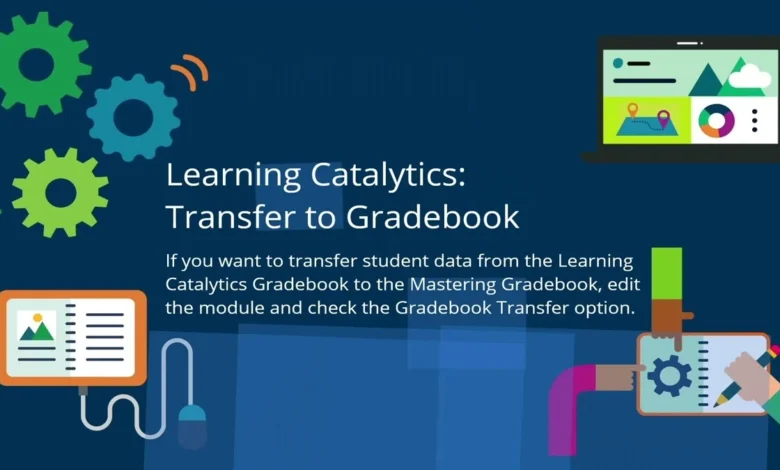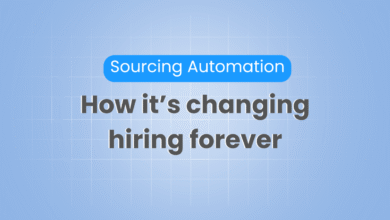Learning Catalytics: Transforming the Way We Learn in Real-Time

Learning Catalytics is reshaping classroom engagement with real-time feedback, collaborative learning, and personalized instruction. Discover how it empowers educators and learners.
What is Learning Catalytics and Why is Everyone Talking About It?
Learning Catalytics is a cloud-based interactive learning platform designed to boost student engagement in classrooms, especially those utilizing active learning strategies. Developed by Pearson, it has quickly become a go-to tool in education settings from universities to community colleges. The platform enables instructors to pose questions and problems during a class session and receive instant feedback from students via their devices. Whether using a laptop, smartphone, or tablet, students can respond in real-time, giving teachers a direct insight into how well the class is grasping the material.
This system isn’t just a glorified polling app. It’s built with pedagogical insights and allows for a variety of question formats beyond multiple choice. Think open-ended responses, image-based activities, numerical input, and even collaborative group analysis. Learning Catalytics enhances learning by encouraging active participation rather than passive consumption.
The Pedagogical Power Behind Learning Catalytics
Educators are always looking for ways to keep students engaged and facilitate deep understanding. Traditional lecture formats often leave students passive and disengaged. Learning Catalytics flips the script by integrating formative assessment into the live classroom environment. This helps instructors gauge student understanding on the fly and adapt their teaching accordingly.
One of the best things about Learning Catalytics is its emphasis on peer instruction. When students are encouraged to discuss answers with peers before submitting responses, they engage in valuable dialogue that strengthens their understanding. This collaborative learning model has been proven to boost retention and conceptual grasp.
Additionally, Learning Catalytics provides comprehensive analytics to instructors, showing trends in student performance and identifying areas that need reinforcement. This allows for personalized instruction tailored to each student’s progress.
How Learning Catalytics Works in a Real Classroom
Imagine walking into a lecture hall with a hundred students. Instead of speaking into a void and hoping for comprehension, the professor launches a Learning Catalytics session. Students log in, see a problem on their screen, and respond instantly. The instructor gets a live heatmap of the class’s answers.
What’s great is the immediate interaction. When a pattern of incorrect answers emerges, the instructor can pivot on the spot and review the concept again. No more waiting for end-of-semester exams to realize the material didn’t stick. Learning Catalytics fosters a dynamic, student-centered environment.
This tech is especially effective in STEM fields, where solving problems in real-time can be more impactful than simply reading about theories. It encourages critical thinking and problem-solving skills through repeated practice and feedback.
Key Features That Set Learning Catalytics Apart

There are many learning management tools out there, but Learning Catalytics brings some unique features to the table:
Flexible Question Types: Unlike standard clickers that rely on multiple-choice, this platform supports multiple question formats. You can draw diagrams, input equations, click on images, or write short answers.
Peer Instruction: Perhaps the crown jewel of Learning Catalytics, peer instruction fosters meaningful discussions among students. When answers differ, students are prompted to discuss their reasoning with peers before responding again. This technique reinforces learning in a profound way.
Real-Time Feedback: Teachers get instant access to student responses, enabling on-the-fly adjustments to the lecture. This keeps sessions responsive and highly effective.
Adaptive Grouping: Learning Catalytics can automatically group students for collaboration based on their responses. This means students struggling with similar concepts can work through problems together, enhancing group learning.
Analytics Dashboard: The backend analytics offer instructors deep insights into how well the class is doing as a whole, and who might need extra support.
Learning Catalytics in Remote and Hybrid Learning Environments
Although initially designed for physical classrooms, Learning Catalytics has proven to be highly effective in remote and hybrid learning setups. As more institutions blend online and in-person instruction, tools like Learning Catalytics help bridge the engagement gap.
The platform’s flexibility allows instructors to integrate it into Zoom calls, Microsoft Teams, or even pre-recorded sessions. Students can participate from anywhere, and the real-time engagement remains intact. This flexibility ensures continuity of learning regardless of the environment.
For hybrid classrooms, where half the students may be in-person and the other half remote, Learning Catalytics helps create a unified experience. Everyone is working on the same problems, at the same time, and receiving the same feedback—a game-changer in modern education.
Integration with Other Tools and Learning Management Systems
Learning Catalytics doesn’t operate in isolation. It integrates smoothly with popular learning management systems like Canvas, Blackboard, and Moodle. This makes setup and course management seamless for instructors.
Students can access Learning Catalytics assignments directly through their course portals. Grades and performance data sync automatically, saving educators countless hours. This tight integration means you don’t have to jump between multiple systems to manage a single class.
And it doesn’t stop there. Educators can also import question banks or share them across departments, which helps maintain consistency in assessments. Plus, integration with Pearson MyLab courses allows for even deeper alignment with course content.
Who Can Benefit from Learning Catalytics?
The short answer? Everyone in education. But let’s break it down:
Students gain a more interactive, personalized learning experience. They get immediate feedback, a chance to discuss and rethink their understanding, and better engagement with the material.
Instructors benefit from real-time insights and the ability to tailor instruction to actual student needs. It also reduces the monotony of traditional lectures and fosters a more collaborative classroom culture.
Administrators see better academic performance and improved student retention. The data generated helps institutions assess teaching efficacy and student engagement.
Even instructional designers and IT departments find Learning Catalytics useful, thanks to its compatibility, ease of deployment, and scalability across campuses.
The Student Perspective: Learning Catalytics as a Game-Changer
From a student’s point of view, Learning Catalytics is like having a personal learning coach in the room. You get to test your understanding in real-time, get feedback, and even collaborate with peers. It breaks the traditional silence of a lecture hall and turns it into a buzzing hub of active learning.
What students love most is the gamified element. You see progress, points, and improvements, which helps maintain motivation. It’s also much less intimidating to respond via your device than to raise your hand in front of 200 classmates.
Peer discussions also create a more inclusive learning environment. Sometimes, students explain concepts to each other more effectively than instructors do. This peer-led reinforcement is a cornerstone of the Learning Catalytics experience.
Instructor Tips: Getting the Most Out of Learning Catalytics

If you’re an instructor just starting with Learning Catalytics, here’s some friendly advice:
- Start Simple: Begin with multiple-choice or image-based questions before jumping into complex formats. This helps you and your students ease into the system.
- Use It Regularly: The more you integrate Learning Catalytics into your lessons, the more comfortable students become. Consistency is key.
- Encourage Peer Dialogue: Don’t skip the discussion phase. It might feel awkward at first, but it pays off in understanding and retention.
- Review the Analytics: After each session, review class performance to adjust your upcoming lessons. The data is there—use it.
It’s also helpful to explain to students why you’re using the platform. Let them know it’s not just for attendance but to actually improve their learning.
FAQs About Learning Catalytics
What devices support Learning Catalytics? Learning Catalytics works on any internet-connected device including laptops, smartphones, and tablets. There’s no need for extra hardware or clickers.
Is Learning Catalytics free? Students usually pay a subscription fee, often bundled with Pearson textbooks or MyLab courses. Instructors typically get access through their institution.
Can it be used outside the classroom? Yes, Learning Catalytics is perfect for homework, review sessions, or remote classes. It’s designed to be as effective asynchronously as it is live.
How does Learning Catalytics handle large classes? The platform scales effortlessly for large lecture halls. Real-time responses are processed smoothly, and grouping features are automated to manage large cohorts.
Is it secure and FERPA-compliant? Yes, Pearson ensures that Learning Catalytics adheres to data protection regulations, including FERPA in the United States.
Table: Comparison with Similar Tools
| Feature | Learning Catalytics | Kahoot | Poll Everywhere | Top Hat |
|---|---|---|---|---|
| Real-Time Feedback | Yes | Yes | Yes | Yes |
| Peer Instruction | Yes | No | No | Partial |
| LMS Integration | Full | Limited | Moderate | Full |
| Multiple Question Formats | Extensive | Limited | Moderate | Extensive |
| Classroom Analytics | Advanced | Basic | Moderate | Advanced |
Inspirational Quote
“Tell me and I forget, teach me and I may remember, involve me and I learn.” — Benjamin Franklin
Conclusion: Why Learning Catalytics Deserves a Spot in Every Classroom
Learning Catalytics isn’t just a tech tool—it’s a catalyst for transforming how we approach education. By making classrooms more interactive, personalized, and data-driven, it bridges the gap between teaching and learning. If you’re looking to make learning more effective, engaging, and fun, then Learning Catalytics is absolutely worth exploring. It brings together the best of pedagogy and technology into one seamless platform.
Whether you’re an educator, administrator, or student, there’s something valuable for everyone in the Learning Catalytics experience.





